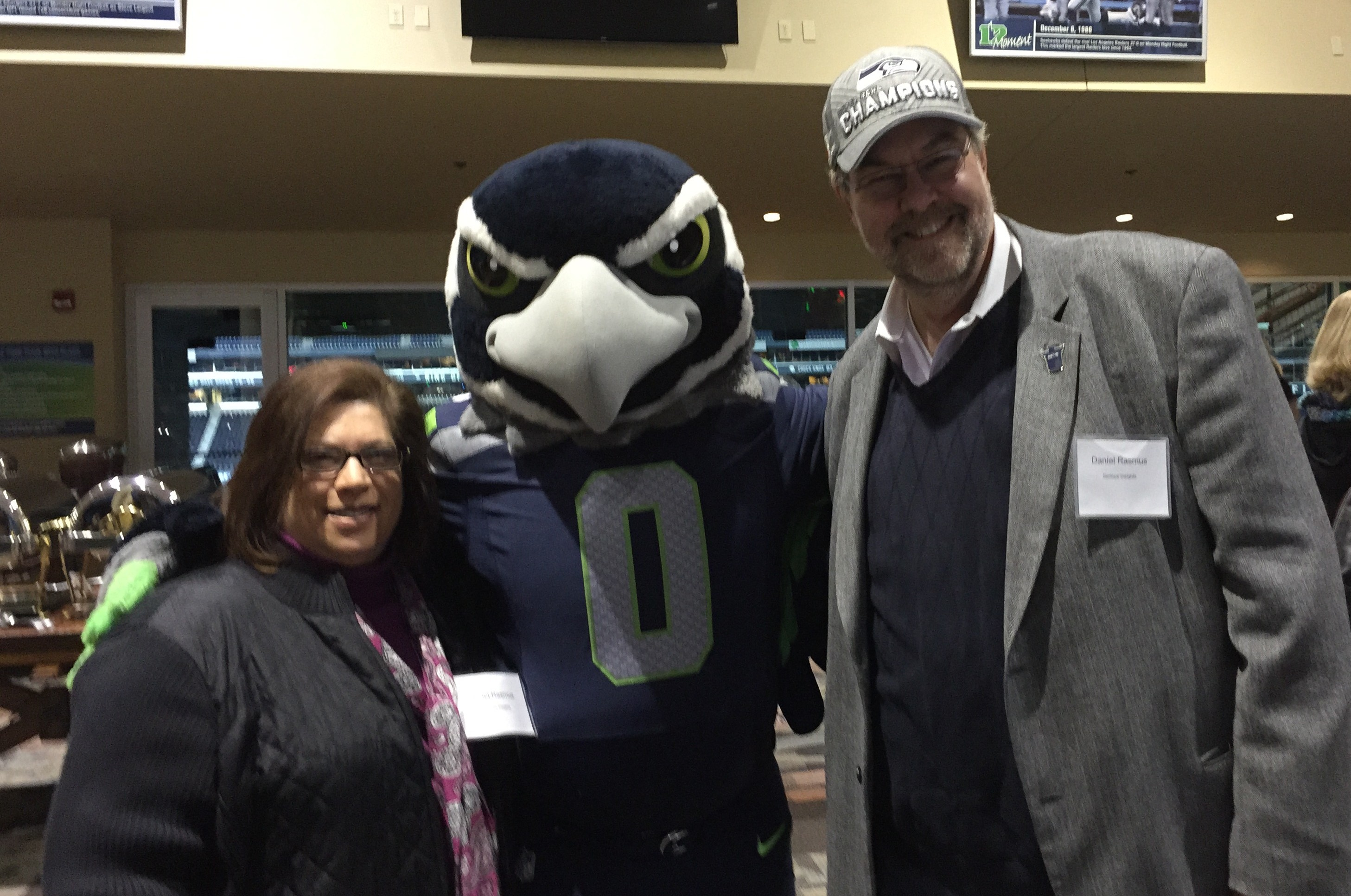Seattle Seahawks Strategy
The Seattle Seahawks gave Green Bay a lesson in Strategy. Strategy represents a path toward a goal, not just a goal. Too many organizations think that listing goals is good enough. In the case of the Seattle Seahawks, those goals might read something like this:
- Delight the 12s
- Repeat as Superbowl Champions
- Maintain defensive dominance as number 1 NFL defense
You have probably written similar goal statements for your organization. Big, aspirational statements for which faith, hard work, pushing limits and keeping on it will help you achieve.
Unfortunately, that isn’t how strategy works, and fortunately, Pete Carroll and the Seattle Seahawks know that.
Let’s take the example of defensive dominance. That path to defensive dominance requires the right personnel, the right skills and a whole lot of practice. The Seahawks don’t just write-down a goal that says “swarm the ball when it is loose.” No, they have a specific turn-over strategy that involves defensive players trying to take the ball away from offensive players, and when they do, challenging for the ball recovery. The Seattle Seahawks defense has a positive turnover ratio on the field because they have a positive turnover ratio on the practice field. They dominate their own offense in turnovers. Teams that don’t systemically practice turnovers don’t get as many, regardless of what their goals may be.
Don’t Just Hope for a Win, Practice Winning
The never give up thing that looked so miraculous and defied statistical odds was strategic because the team practices for moments that add up to a game, not a game that is made of moments. That is a policy and practice that permits comebacks to occur. It is a specific strategy for game perception, not a vague, wishful statement — it is something that is actionable and can be practiced. Strategy also includes player selection that had nothing to do with that moment. Player selection, however, has everything to do with planning to hire players who are ready and capable of stepping up to “those” moments — players who are themselves strategic even if that isn’t the word they might use to describe themselves.
Much can be learned about strategy from the Seahawks, not particularly from the specifics of their play calling on the field, but from the strategic way in which the organization views the game—how the team breaks the game into components that can be worked on, practiced and implemented.
The 12s
As a proud 12, Seahawks fan engagement is no less strategic. They don’t just hope for fans, they recognize the fans with the first breath of every press conference. They have built a fan culture not just by saying they like their fans, but by actually behaving in ways that demonstrate their commitment. That isn’t accidental, it is purposeful and practiced — it is strategic. Just ask anyone who has every raised a 12th man flag.
If you want your organization to act strategically you need to examine every strategy and ask, “How will this strategy or, more likely goal, be achieved? “What specific actions do we need to undertake, to invest in, to focus on, in order for that goal to be realized.” “What do we do more of, and what do we stop doing, in order to achieve this objective?”
Strategy is About Action
Unrealistic goals, vague promises to stakeholders and uncoordinated efforts in expectation of alignment don’t work. Truly strategic organizations don’t operate on faith or hope for accidents to bring them success, they coordinate their effort behind their big goals and make them happen as best they can against the backdrop of uncertainty and reality through which they must slog. The Seahawks had plenty of slogging to do in the NFC championship, but they also knew that they could beat Green Bay because they had practiced it. They moved past the moment of adversity and executed well on all the little things that make the strategy real. That gave them a fighting chance. Of course, luck isn’t out completely, because strategy doesn’t include winning a coin flip, but it does involve day-after-day practice of making sure a jump ball is yours and not the other guys.
Super Bowl XLIX
I look forward to Super Bowl XLIX because the Patriots are also strategic, and if you watch carefully you will be able to see which team executes their strategy better, and even which strategy is better — because just making strategic choices doesn’t mean that one strategy can’t be triumphant over another — in studying each other, practicing for uncertainty, or creating it — strategy too gets adjusted to meet the real world challenges. There is no better real world example of strategy, good or bad, than watching American football. Like an artificial life program that accelerates evolution, football is a 60 minute acceleration of principals of strategy played out. No lecture on strategy by anyone will ever beat football on any given Sunday.
And #GoHawks


